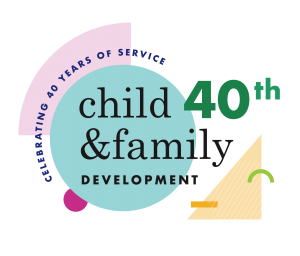By Rachel Lindenauer MSOT ~ Child and Family Development
As our world is coming together to stand up to racial injustice and bring about change, it is important to help children understand diversity and inclusion. Our world is full of diverse cultures that should be celebrated. Appreciating our differences while also recognizing our similarities are important life lessons. A great place to start this conversation is in your home. A wonderful way to help children learn about diversity and support inclusion is through hands on activities. Below are some ideas to help you get started!
What’s the difference?
Various food activities can be helpful in teaching diversity. It is also a great way to promote visual discrimination skills, allowing kids to identify the similarities and difference of items. Below are a few options to help your children understand our differences as well as our similarities.
1) Egg-cellent
Supplies: white egg, brown egg, and bowl
Sit down with your child/children and show them a white egg and a brown egg. Ask them to describe the differences they notice. Let them hold, smell, shake each egg etc. Then ask them what they think the inside will look like. Will they be the same? Different?
Crack open the eggs and show them that the insides are in fact, the same.
This is where you can start the conversation about diversity. These eggs represent people around the world. People are all unique on the outside and may have different eye colors, body types, skin colors, cultures, languages etc. However, on the inside we are all the same. We are all human beings with beating hearts that experience the same emotions.
2) Apple-icable
Supplies: variety of different color apples
In this activity you can either have your child/children describe the differences between the apples or explain how each apple has a different color “skin”. Then cut each apple right down the core to reveal a star inside. The star represents our character or personality. Each person, regardless of their skin color, has a unique personality that makes them who they are.
Sensory time!
A great way to promote learning is by bringing in our senses. Sensory processing skills allow children to receive various stimuli from their environment, organize it and respond with an appropriate motor response. Encouraging the exploration of sensations will help with this process of sensory integration. This next activity targets sequencing skills, hand strength, and sensory processing. It will allow kids to use their sense of touch, smell, and sight to better understand diversity.
3) Want to play dough?
Supplies: 2 cups flour, 1 cup salt, 1 cup cold water, 1 tbsp oil, essential oil, and food coloring
Directions for making play dough: Combine flour and salt in a large bowl. Add the water, oil, and a drop of essential oil (optional) and stir it. Knead the dough to your desired consistency. Do not add the food coloring yet!
Making play dough is an easy way to get your child/children excited. It is fun letting them combine the ingredients and get their hands messy. Once you have a large white ball of dough, have the children describe it how it looks, feels, smells etc.
Then taking that same dough and separating it into smaller portions, then add colors!! You can make as many different colors as you/your children want. Once you have a variety of colors, you can discuss the dough again. Other than the colors, is the play dough different? Let them explore the sensations of the dough to understand it still feels and smells the same. It even still looks like play dough; the only difference is the colors.
Now explain how people can be like our play dough. On the outside a person might have a different appearance, however, our make up is the same!
Additional resources
Helping children understand diversity and celebrating our differences will allow them to broaden their views. The more we normalize different cultures in our households the more we promote inclusion in our world. Children are observant and will take our lead when it comes to inclusivity, so be their example!
– Incorporate a variety of different cultural foods: whether you cook it or go to a restaurant.
– Toys: buy multiracial/ multicultural toys to normalize our different appearances
– Read books about different cultures
Here is a wonderful scholastic article with a variety of multicultural books to read.
Rachel Lindenauer, MSOT is a North Carolina licensed Occupational Therapist at Child & Family Development. We provide services to children, teens and young adults with developmental, neurological and congenital impairments. Services can be habilitative (learning a skill for the first time) or rehabilitative (becoming more proficient at a skill or relearning a skill).
Therapy visits focus on helping kids with everyday activities, staying organized and focused in the classroom or playground, managing sensory input and their own behaviors, as well as stretching and strengthening their muscles. Schedule a free phone consultation with Rachel today!
Child & Family Development

Locations:
Mitdtown:
4012 Park Road, Suite 200
Charlotte, NC 28209
704.332.4834
Pineville:
11940 Carolina Place Parkway, Suite 200
Charlotte, NC 28134
704.541.9080
Website | Facebook | Instagram | Twitter




